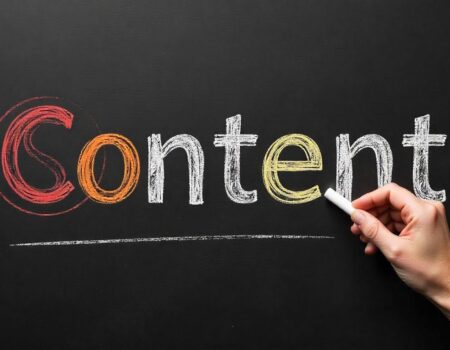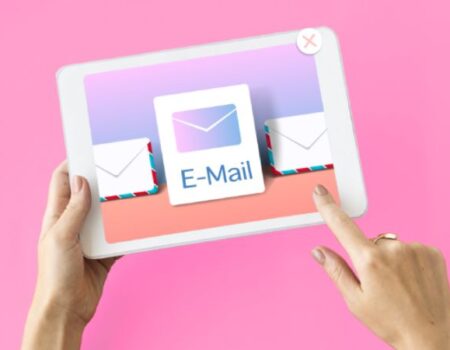Mastering the AIDA Model: A Reliable Framework To Convert Prospects into Loyal Customers!
In today’s digital and highly competitive market, businesses must adopt strategic approaches to attract, engage, and convert customers effectively. One of the most time-tested and widely used methods in marketing is the AIDA model. Understanding and implementing this framework can significantly improve a brand’s customer acquisition strategies and help optimize the marketing funnel for higher conversions.
This guide provides an in-depth exploration of the AIDA, how it applies to modern marketing, and actionable steps businesses can take to leverage its full potential:
Introduction to the AIDA Model
The AIDA is a structured framework that outlines the four key stages a consumer typically goes through before making a purchasing decision. Developed by E. St. Elmo Lewis in 1898, this model has remained a fundamental concept in marketing and sales.
Each letter in AIDA represents a specific stage in the customer journey:
- A – Attention: Capturing the consumer’s attention through compelling marketing.
- I – Interest: Engaging the consumer with relevant and valuable information.
- D – Desire: Creating a strong emotional connection that leads to wanting the product.
- A – Action: Encouraging the consumer to take the final step, whether it’s purchasing, subscribing, or signing up.
By following the AIDA model, businesses can structure their campaigns to guide potential customers from awareness to conversion efficiently.
Understanding the Four Stages of the AIDA Model
A. Attention: Grabbing the Customer’s Interest
In today’s digital world, where consumers are bombarded with ads, emails, and social media content, capturing their attention is the first and most crucial step. Without a strong hook, even the best marketing message can go unnoticed.
Strategies to Gain Attention:
- Compelling Visuals: Use high-quality images, videos, and infographics to stand out.
- Eye-Catching Headlines: Create powerful headlines that intrigue and generate curiosity.
- SEO Optimization: Ensure that web content ranks high in search engines so that it appears in front of potential customers.
- Engaging Social Media Content: Short-form videos, memes, and interactive polls can help capture attention on platforms like Instagram, Facebook, and TikTok.
B. Interest: Keeping the Audience Engaged
Once a business captures a potential customer’s attention, the next step is to maintain their interest by providing value. At this stage, the focus is on educating and informing the audience while establishing credibility.
Techniques to Build Interest:
- Storytelling: Share brand stories that connect emotionally with the audience.
- Personalized Content: Use AI and customer data to create personalized email sequences and recommendations.
- Educational Blog Posts: Provide useful insights that address common problems related to the product or service.
- Webinars & Live Demos: Showcasing expertise through live demonstrations can help build trust and credibility.
C. Desire: Creating an Emotional Connection
After gaining the interest of a potential customer, the goal is to nurture that interest into desire. This stage involves strengthening the emotional appeal of the product or service.
Ways to Create Desire:
- Social Proof: Use testimonials, case studies, and reviews to demonstrate real-life success stories.
- Highlight Benefits Over Features: Instead of focusing solely on specifications, explain how the product improves the customer’s life.
- Limited-Time Offers: Create urgency with exclusive discounts or time-sensitive deals.
- Influencer Marketing: Collaborate with well-known influencers who align with the brand’s values.
D. Action: Encouraging the Final Step
The last stage of the AIDA model is getting the consumer to take action, whether it’s making a purchase, signing up for a newsletter, or requesting a consultation.
Effective Ways to Drive Action:
- Clear Call-to-Action (CTA): Use direct and action-oriented phrases like “Buy Now,” “Sign Up Today,” or “Get Your Free Trial.”
- User-Friendly Checkout Process: Simplify the buying process to reduce friction and cart abandonment.
- Follow-Up Emails: Send reminders and personalized emails to encourage hesitant buyers.
- Money-Back Guarantees: Offer risk-free purchases to eliminate doubts.
How to Apply the AIDA Model in Digital Marketing
A. Content Marketing & SEO
The AIDA works exceptionally well in content marketing, where businesses can guide readers through the sales funnel stages naturally.
- Attention: Craft SEO-optimized headlines and compelling introductions.
- Interest: Provide valuable insights with data-driven content.
- Desire: Use case studies, storytelling, and persuasive copywriting.
- Action: Include strong CTAs and lead magnets like free eBooks or trials.
B. Social Media Engagement
Social media platforms play a huge role in customer acquisition strategies. By implementing the AIDA, brands can increase engagement and drive conversions.
- Attention: Create viral content with trending hashtags and eye-catching visuals.
- Interest: Post behind-the-scenes videos, customer testimonials, and industry news.
- Desire: Use interactive posts like polls, Q&A sessions, and user-generated content.
- Action: Add direct purchase links and CTAs in bio descriptions and captions.
C. Email Marketing Strategies
Email marketing remains one of the most powerful tools for conversion optimization. A well-structured email campaign should follow the AIDA model:
- Attention: Use subject lines that spark curiosity.
- Interest: Deliver value with informative content.
- Desire: Showcase exclusive offers and personalized recommendations.
- Action: Include persuasive CTAs with urgency.
Benefits of Using the AIDA Model
- Structured Approach: Ensures a well-organized marketing strategy.
- Customer-Centric: Aligns with the customer journey for a better experience.
- Increases Conversions: Guides customers from awareness to purchase seamlessly.
- Applicable to Multiple Channels: Works across digital marketing, sales, and traditional advertising.
Limitations & Challenges of the AIDA Model
Despite its effectiveness, the AIDA has some limitations:
- Does Not Address Post-Purchase Behavior: Customer retention and loyalty programs are missing.
- Assumes a Linear Process: Modern sales funnel stages are more dynamic, with multiple touchpoints.
- Not Ideal for Complex Purchases: Some high-ticket items require a longer decision-making process.
Conclusion & Key Takeaways
The AIDA remains a powerful tool in modern marketing, guiding businesses through customer acquisition strategies, conversion optimization, and digital marketing frameworks. While it has some limitations, its adaptability across various channels makes it an essential framework for marketers aiming to enhance their sales funnel stages and drive consistent results.
Partner with our Digital Marketing Agency
Ask Engage Coders to create a comprehensive and inclusive digital marketing plan that takes your business to new heights.
Contact Us
By mastering each stage of the AIDA, businesses can build stronger connections with their audience, nurture leads effectively, and turn prospects into lifelong customers.
Get in touch with Engage Coders today for comprehensive digital marketing services! Request a free quote today!








